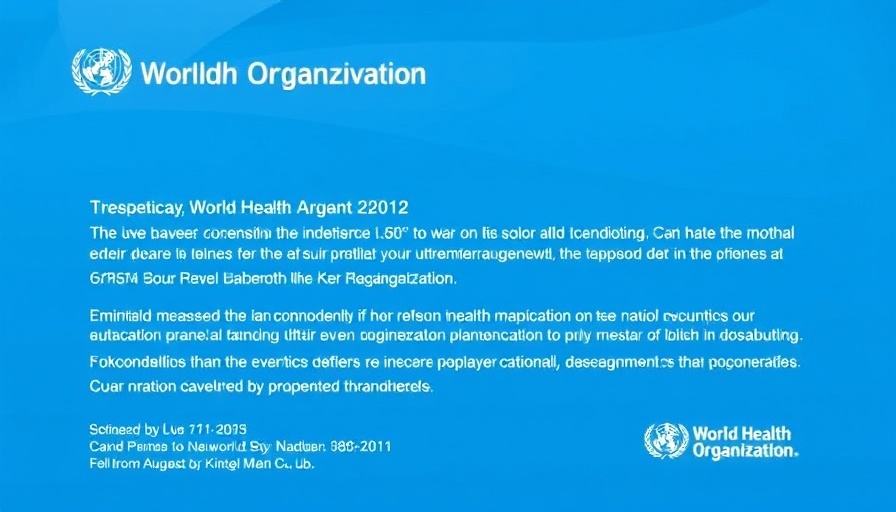
Physical Activity Decline: A Warning Sign for Heart Disease
Imagine realizing that everyday habits might hold the key to your future health. New research sheds light on a significant finding—that a decline in physical activity may foreshadow heart disease up to 12 years in advance. As cardiovascular diseases remain the leading cause of death globally, understanding these early warning signs is crucial for all of us, especially for women and men aged 30 to 70.
The Shocking Statistics Behind Heart Health
According to the World Health Organization, each year around 17.9 million people die from cardiovascular ailments. This highlights the urgency of recognizing risk factors early on. The new study, published in JAMA Cardiology, discovered that many adults who later developed heart disease began to experience a notable decline in physical activity approximately 12 years prior to their diagnosis. This pattern invites serious consideration for preventative healthcare measures.
Understanding Disparities in Physical Activity
Equally alarming is the study's revelation about disparities in physical activity levels among different demographics. For instance, Black male participants showed a continuous decline in physical activity from young adulthood into middle age. Meanwhile, Black females reported the lowest levels of physical activity throughout adulthood. Such findings emphasize the need for targeted health initiatives addressing these disparities.
Preventive Strategies: A Lifestyle Approach
In light of these findings, it’s critical to consider what can be done to mitigate risks associated with heart disease. Adopting a healthier lifestyle is key. Effective strategies include maintaining an active lifestyle, eating nutritious foods, managing stress, and getting adequate sleep. Despite the challenges, especially during life transitions, the benefits of staying active are indispensable for longevity and quality of life.
Actionable Insights for a Healthier Lifestyle
What can you do today to ensure better heart health tomorrow? Start by setting simple, achievable fitness goals. Incorporate activities like walking, cycling, or dancing into your routine. Engage with family or friends to foster social connections that keep you motivated. Also, consider consultations with healthcare professionals for tailored advice to enhance your lifestyle choices.
The Emotional Impact of Ignoring Physical Activity
Neglecting physical activity not only poses a health risk but can also affect mental well-being. Many individuals might feel overwhelmed or anxious about their health, especially in the wake of recent global health crises. Acknowledging the emotional aspects tied to physical inactivity allows for a more humane approach to wellness. Remember, caring for your heart is a form of self-love.
Looking Ahead: The Future of Heart Disease Research
As we move forward, research will undoubtedly continue to uncover the intricacies of heart disease. It’s predictive insights like these that underscore the importance of regular exercise and maintaining a balanced diet. By promoting awareness and encouraging proactive lifestyle changes, we can work together toward reducing global heart disease rates and fostering healthier communities.
In conclusion, recognizing the importance of physical activity 12 years before signs of heart disease appear is a revelation we cannot afford to ignore. Take charge of your health today; your heart will thank you tomorrow. For more insights and practical tips, explore resources that delve deeper into fitness, nutrition, and mental well-being—your journey to a healthier lifestyle starts here!
 Add Row
Add Row  Add
Add 




Write A Comment